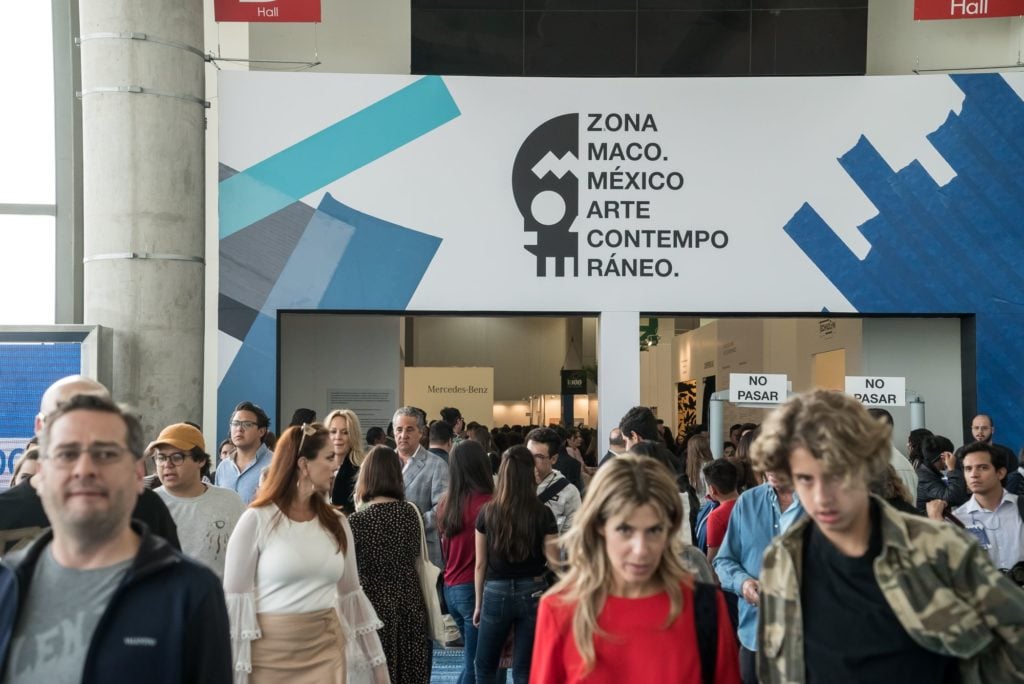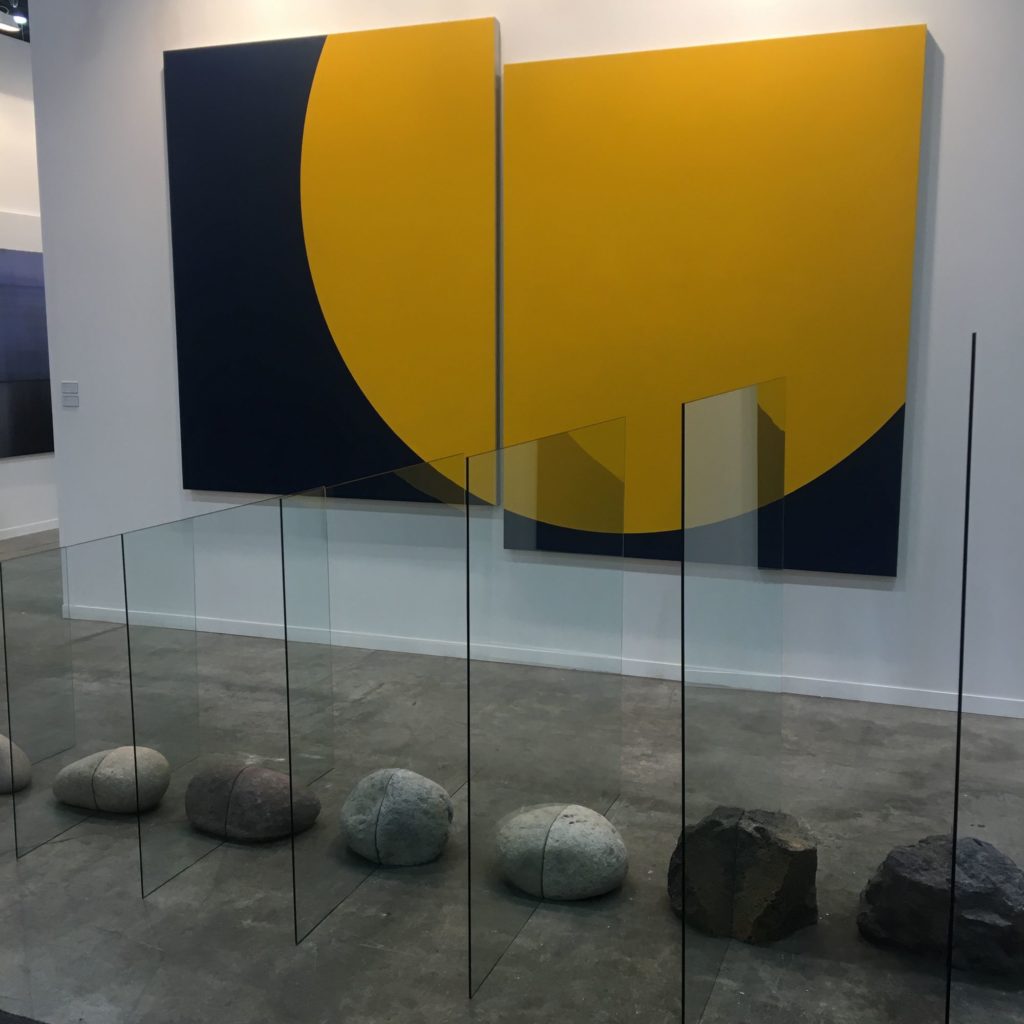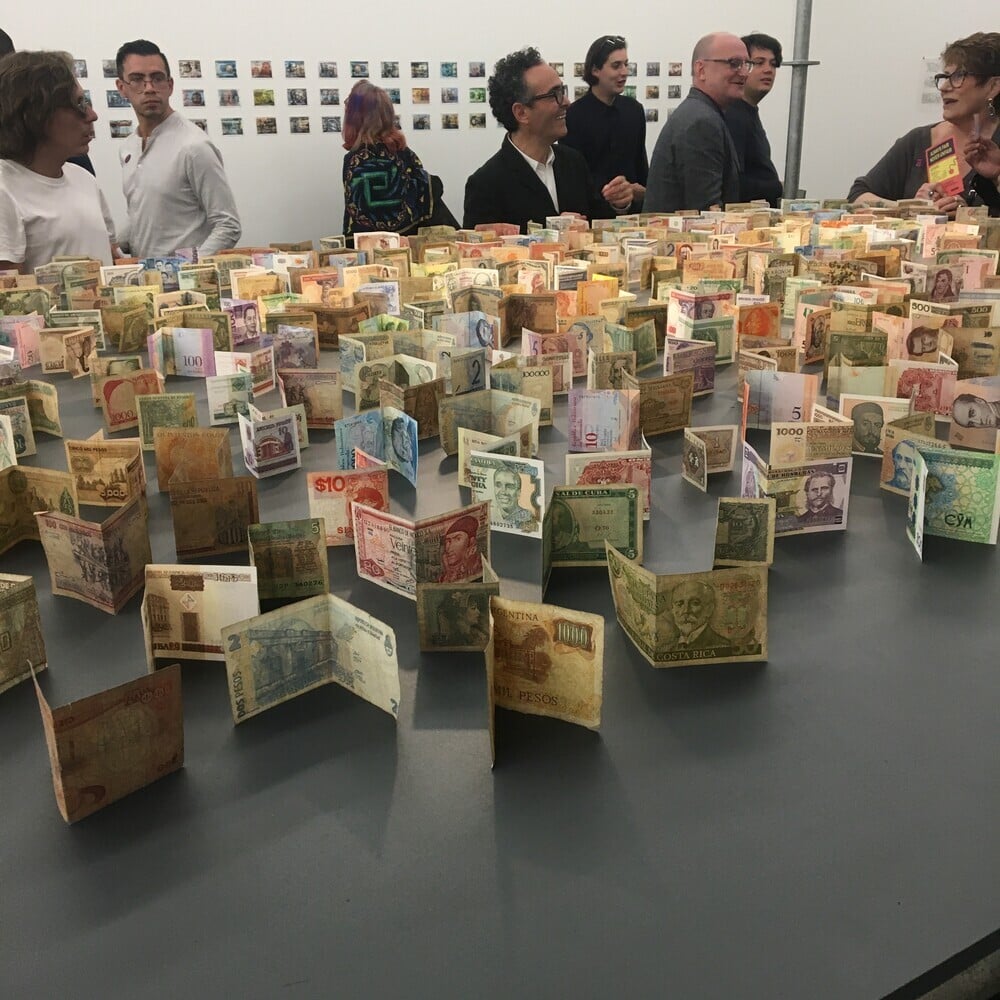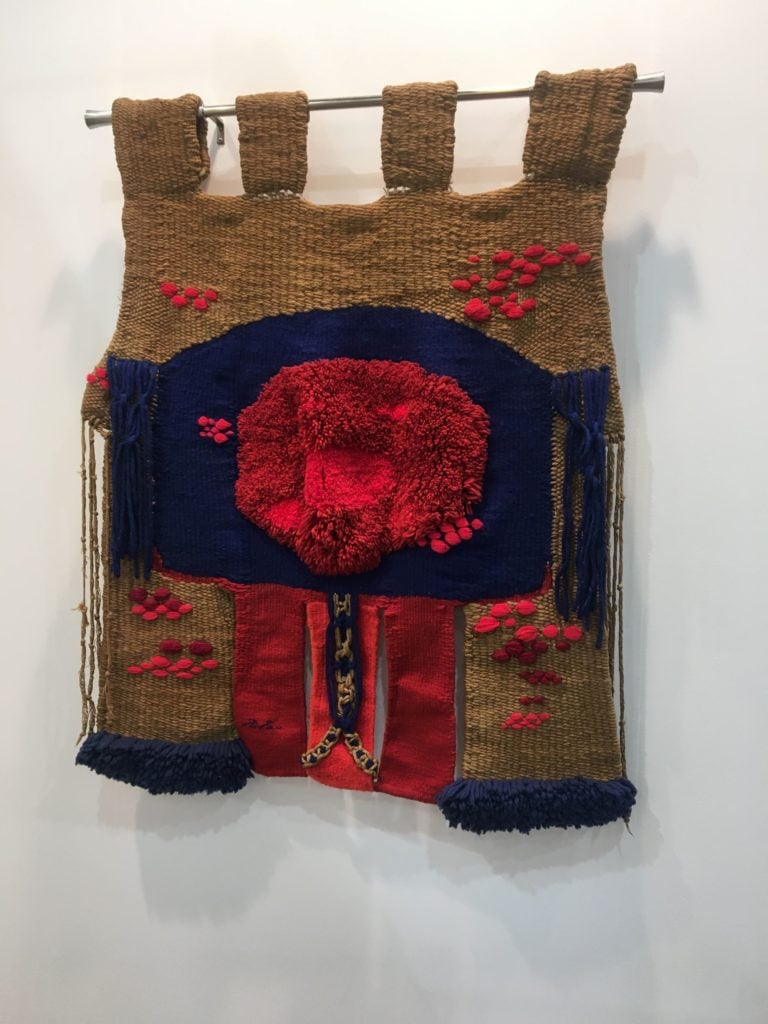Art Fairs
Art Fairs May Be Getting Blander, But Mexico City’s Zona Maco and Material Offer a Model for Regional Events to Thrive
Latin America's leading art fair is still going strong, although it needs to keep innovating and evolving.

Latin America's leading art fair is still going strong, although it needs to keep innovating and evolving.

Javier Pes

As Latin America’s leading art fair, Zona Maco, welcomed invited collectors on Wednesday there were two very different things on international gallerists’ minds. Would Mexican collectors be in a buying mood one year into the socialist presidency of Andres Manuel Lopez-Obrador, better known as AMLO? And looking further afield, would Art Basel in Hong Kong be postponed amid fears of the fast-spreading coronavirus?
Within hours of the fair’s opening in Mexico City on February 5, the answer to the first seemed a definite ‘yes,’ with early sales made by Lisson Gallery, Sean Kelly, Pace, and Kurimanzutto, among others. (As for ABHK, a lack of updates from Basel meant gallerists’ shipments for its Asia edition remained on hold, with the rumor mill running full-speed. Twenty-four hours later the news arrived that the fair was indeed cancelled.)
At Lisson’s booth, the London and New York gallery’s executive director Alex Logsdail stood beside a new sculpture by the Mexican artist Pedro Reyes; the piece had been snapped up by a Mexican collector who acquired it for his foundation. Logsdail described Zona Maco as being a regional fair, but “in a good way.” He’s been showing there for the past decade—building relationships with collectors from Mexico, as well as with regular attendees who fly in from across South America as well as Texas, California, and New York. Logsdail said there are a handful of collectors willing to spend millions of dollars on a must-have work, but for many, budgets max out around the $250,000 to $300,000 mark. Reyes’s volcanic stone column, Siete Piedras (2000), went for $160,000, arguably a bargain for such an impressive piece.

Jose Dávila’s work at Sean Kelly, Zona Maco 2020. Photo by Javier Pes.
Another Zona Maco veteran, Sean Kelly, said the fair is important on the global map partly because of Mexico City’s well-established artistic culture, which is as lively as ever. He also praised the sophistication of the city’s collectors, who match nicely with the New York-based gallery’s mantra: Collect wisely. “There is a lot of wealth here, a bit like Brazil,” Kelly told Artnet News. “Mexican collectors use their knowledge and education. They are not flashy.” He expects many to return at the weekend to make their purchases, although early sales already included a sculpture by Antony Gormley and pieces by Jose Dávila. There was special interest from collectors and curators in the Mexican artist’s elegant stone-and-glass sculpture, priced at $150,000, offset by a vibrant, large-scale graphic work, both Untitled (2020).
Opening day business was also brisk at Pace. The gallery found buyers for a Loie Hollowell painting, a Joel Shapiro sculpture, a mirror work by Song Dong, and a James Turrell hologram. (Prices were not disclosed.) Zona Maco newbies Xavier Hufkens of Brussels set out its stall with a solo presentation of work by Matt Connors. After testing the water in Mexico City, the gallery will head north of the border to show at Frieze LA next week.
José Kuri sounded upbeat after the uncertainties of 2019. The co-founder of Kurimanzutto—perhaps the leading gallery in Mexico City, which now also has a New York space—reported a strong start at Zona Maco. Allora & Calzadilla’s creepy, petrified petrol pump dominated the booth. Part of a series first shown at the Venice Biennale in 2011, it feels as timely as ever.
The number of acquisitive collectors and interested curators at Zona Maco also bodes well for the Material Art Fair, which opened Thursday. Kurimanzutto, along with Mexican heavy hitters Labor and OMR, have booths at both fairs. Gabriel Orozco has created a standout installation for Kurimanzutto at Material. Called Tracing Money (2020) it features an array of paper bills, plus drawings and transparencies of small details that have caught the eye of the Mexico- and Japan-based artist. A comment on the fluctuating value of paper money, it would be ideal for a museum anxious about the value of its endowment (or the intricacies of ethical fundraising). Individual drawings and photographs are priced at $15,000 and $1,500, respectively.

Gabriel Orozco’s Tracing Money, on view at Kurimanzutto’s booth at the Material Art Fair. Photo by Javier Pes.
Kuri explained that Mexico City’s appeal this week goes beyond the two fairs and the slew of gallery openings. There’s also Salon Acme, a selling show featuring work by mainly younger and self-represented artists, held in funky old mansions that are a short walk from Material’s venue, the Frontón sports hall. Meanwhile, the design-meets-sculpture gallery and platform Masa has taken over another old mansion stripped to its bare bones. And the city has a growing number of artist-run spaces that should be on any Zona Maco collectors’ itinerary—such as M74, in the gritty Guerrero neighborhood, which is hosting a trio of group shows.
Also worth a trek are the historic Luis Barragan-designed stables at San Cristóbal, which play host to a solo show of site-specific work by the veteran British sculpture, Richard Long. (The presentation is co-organized by Lisson, who have an example of Long’s mud works on offer at Zona Maco.) At the stables, Long has gathered together stones from across Mexico to create works that echo his ephemeral pieces from back in 1979, made on epic walks to the country’s highest peak and deepest gorge. He is only the second contemporary artist to show at the unique venue, following Sean Scully in 2018.

Marta Palau, Amore nuevo (1972), shown by Waldengallery at Zona Maco 2020. Photo by Javier Pes.
Returning to the fair proper: The strong presence of work by radical female artists at Zona Maco, many from Mexico, will appeal to collectors and institutions looking to correct any gender bias in their holdings. Head to Waldengallery of Buenos Aires for work by three Mexican artists, Maris Bustamente, Marta Palau, and Magali Lara, all featured in the “Radical Women” show, the Hammer Museum’s groundbreaking contribution to Pacific Standard Time: LA/LA in 2017. On offer is Bustamante’s witty subversion of the patriarchy and Freud’s theory of penis envy. Photographs of her 1982 performance piece—for which the artist produced self-portrait masks, featuring her sporting an oversized penis-shaped nose—are priced at $30,000. Nearby are a pair of vibrant textile wall works from the 1970s by Palau, priced at $60,000 and $100,000.
As Logsdail noted, Zona Maco is truly a regional fair in the best possible way, with its strong showing of galleries from South and Central America supporting an international roster. That said, the fair cannot afford to rest on its laurels. The standard of the booths is uneven, and the fair has never made up the loss of the many smaller galleries that have decamped to Material. “Mexico City has everything: great art schools, artists, non-profits, museums, and galleries,” said the Brussels-based collector Alain Servais. “Zona Maco gives international collectors a reason to visit,” but it needs to focus on quality. What the city doesn’t need, he cautioned, is another “art fair shopping mall.”